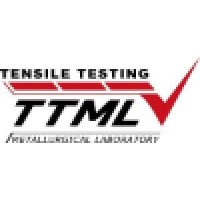
Tensile Testing Metallurgical Laboratory
Tensile Testing Metallurgical Laboratory (TTML) is a full-service ISO accredited commercial testing organization located in Cleveland, OH. Services provided include mechanical, chemical, metallurgical and corrosion-resistance properties of metallic materials including in-house sample preparation. All evaluations are performed in accordance with established commercial (ASTM, AWS, etc.), Military (MIL-STD, MIL-SPEC, etc.), and/or client proprietary (Boeing, GEAE, GM, etc.) specifications and methods. TTML is accredited to ISO/IEC 17025 by A2LA and also to AC7101/Nadcap by PRI and approved by Boeing, General Electric Aircraft Engines and Messier-Dowty for aerospace testing. Clients are involved in the automotive, fastener, medical, nuclear, welding and general manufacturing markets.






